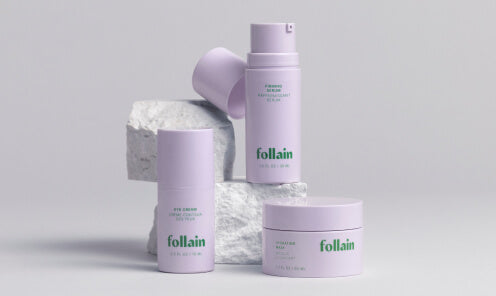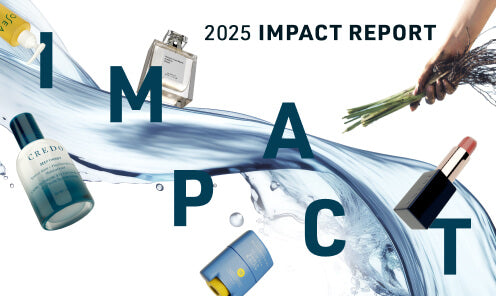Written by Mia Davis, VP of Sustainability and Impact at Credo
At Credo, clean is our middle name (and first and last). Therefore, we are obviously partial to natural and naturally derived ingredients that are often safer and more sustainable than man-made synthetic chemicals.
But let’s get specific – What you may not know is that “natural" is not synonymous with "clean." Rather, it is one element of "clean." Credo clean means that we ask about the source of the ingredient, as well as potential safety, sustainability and ethical concerns. We are pushing for greater transparency and more available information in a supply chain that is often murky and full of marketing claims.
Here’s how we define the following:
Organic
In this case, this isn’t Credo’s definition: It is the USDA and the State of California. The USDA regulates the term “organic” as it applies to agricultural products through its National Organic Program (NOP) regulation, 7 CFR Part 205. If a cosmetic product contains 100% or 95% organic agricultural material, it may be eligible for the USDA seal. According to the California Organic Products Act of 2003, products “sold as organic” must contain at least 70% organic material. If the product contains less than 70%organic material, then the company may note which ingredients are certified organic on the ingredient list, but not on the front label.
Natural
Natural ingredients come from natural sources (not synthetic). This means that they can be found in nature in the same or mostly the same chemical form as the ingredient in the product (e.g. fruit seed oils, clays, essential oils). There are a lot of companies that call naturally-derived or even synthetic ingredients “natural.” That is greenwashing; it isn’t cool. Credo is working to change that by clearly defining these terms and requiring that brands obtain documentation on ingredient source and processing. We also ask brands to refrain from over-stating their “naturalness.”
Naturally-derived (including Plant-based, Bio-based, Mineral-based)
The ingredient came from plant or mineral but has been processed and/or combined with other ingredients which may be synthetic (e.g. Zinc oxide that is coated, or Cocamidopropyl betaine from coconut fatty acids and synthetic feedstocks) There are a lot of brands that call naturally-derived or even synthetic ingredients “natural.” Credo is working to change that by clearly defining these terms and requiring that brands obtain documentation source and processing. (Because naturally derived isn’t a bad thing—but pretending something is natural when it is not is. Really? Let’s just be real.)
Renewable and/or Sustainable
These materials are natural ingredients that do not use non-renewable resources (like petroleum/petrochemicals). These raw materials are abundant and biodegradable, and grown/harvested without harmful pesticides, plantation farming methods, clear-cutting, etc. Suppliers should also implement:
• Water and waste reduction efforts
• Environmentally sound extraction process for minerals
• Renewable energy, carbon reduction efforts
• Regenerative agriculture (Regenerative agriculture improves soil health, primarily through the practices that increase soil organic matter)
• Transitional farming (moving from “conventional” to organic)
Synthetic
Synthetics get a bad rap, but it's important to understand that 'synthetic' doesn't automatically mean 'toxic.' Yes, synthetic ingredients are man-made and don't occur naturally in the environment—they're new molecules, created through chemical processes. Sometimes, these processes start with petrochemical feedstocks, like oil or gas, while other times they might begin with something natural, like a plant. However, through processing, these ingredients become something entirely new, not recognizable as natural anymore.
But here's the thing: synthetic ingredients can be designed to be safe and effective, and in some cases, they can even be more sustainable than their natural counterparts. For instance, lab-created molecules can be engineered to avoid certain allergens or environmental impacts that a natural ingredient might have. It’s all about how these ingredients are formulated, tested, and used in a product—not just where they come from. But, synthetic or natural, we must stop relying on unsustainable chemical feedstocks (like petrochemical) or harvesting ingredients from delicate environments.
Animal Cruelty-Free
We have asked all brands to ensure that every product is not tested on animals.
Credo does allow carmine, lanolin, keratin and beeswax. We ask brands to push their suppliers for transparency on animal treatment and sustainability for lanolin and keratin (from sheep) and beeswax (from bees). We ask brands to avoid Royal Jelly (from bees). All animal fats and musks are prohibited (see The Dirty List™), and we ask brands to always choose non-animal sources for all ingredients that may be derived from animals or plants, minerals, fermentation or synthetic.
Gluten-free
These products have no gluten —no wheat, hydrolyzed wheat protein, barley, oat or oat derivatives (which may have been cross-contaminated with wheat) are present in the product.
Brands need to obtain a statement from each ingredient supplier if they’re making this claim, and/or test ingredients/products for the presence of wheat protein.
GMO-free (non-GMO)
Credo prefers non-GMO ingredients, but it is not required. As with all other claims, this one needs to be backed up. FYI, cosmetics ingredients that come from the following crops are the ones to watch out for (and the others should be inherently non-GMO):
• sugar beets
• soy (including tocopherol)
• corn (including alcohols, propanediol)
It’s a lot of good information and we know these words can be confusing. Just shop cleanly and with confidence knowing that every product at Credo has been tried, tested and vetted. If ingredients don’t belong on your skin (hair and teeth), you won’t see them on any of our labels.
Learn more about our Clean Standards and the 2700 + ingredients we ban on The Dirty List.

Mia is the Director of Environmental and Social Responsibility at Credo. Her career began in the environmental health movement. In 2007, she co-led the Campaign for Safe Cosmetics. Davis was Head of Environment, Health and Safety at Beautycounter for 5 years, and she's now helping Credo brands and customers define and lead the "clean beauty" sector.















